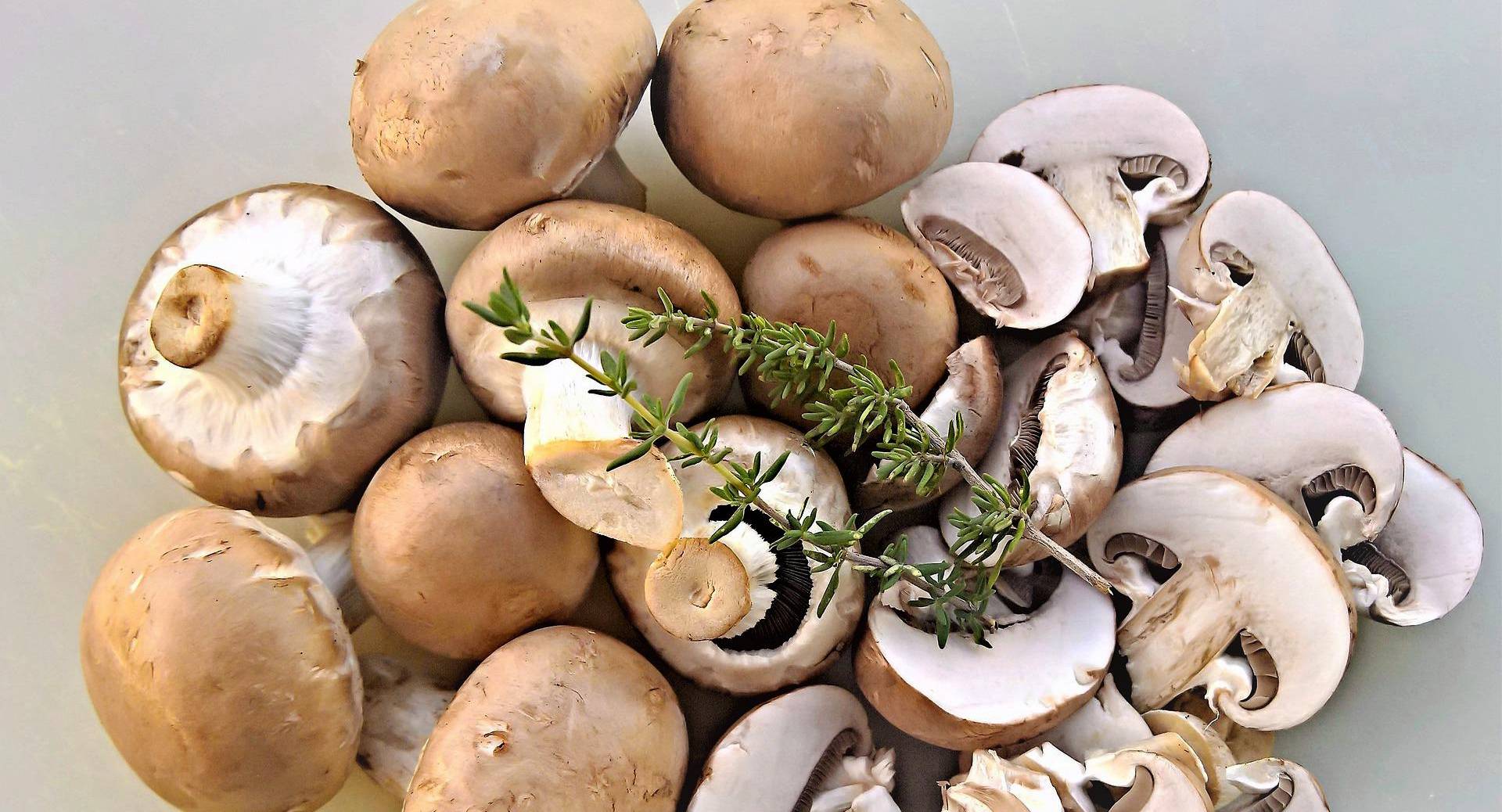The Magic of Mushrooms

PREMIUM CONTENT for MEMBERS ONLY
For the fourth year in a row, mushrooms have been listed as a top trend in the food industry with The New York Times officially naming mushrooms “the ingredient of the year ” for 2022. With sales of mushrooms reaching almost $111,000,000 in January 2022, up 8% from 2020, the mushroom boom can be seen across a wide array of industries. Mushroom prints and patterns are becoming a common appearance in the fashion world, more and more chefs are experimenting with different varieties in their dishes, and several documentaries have hit the big screen discussing the potentials of using psychedelic mushrooms as a treatment for a range of mental health issues. There’s no wonder why mushrooms are catching the public’s eye – between their various health benefits, high sustainability ranking, versatility in dishes and potential as alternative treatments for mental health conditions, the potential of this fungus is clearly just being tapped into.
As the plant-based lifestyle continues to grow in popularity for its growing list of health benefits, this fungal favorite has become one of the champion ingredients of the plant-based food movement. With more research coming out about the multitude of health benefits of consuming mushrooms, it’s no surprise they’ve become such a sought-after food. Mushrooms contain a significant amount of ergothioneine, an amino acid and antioxidant that prevents or slows cellular damage. A review of 17 cancer studies from 1966 to 2020 found that eating just two mushrooms a day, or 18 grams a day, can lower your risk of cancer by 45%. Researchers are also looking at the impact the consumption of mushrooms may have on mild cognitive impairment which presents as memory and language difficulties and is often an early symptom of Alzheimer’s disease. In a Singaporean study, participants who ate more than 2 cups of mushrooms per week had a 50% lower risk of developing mild cognitive impairment and even those who only consumed one cup still saw benefits.
Vitamin D plays a major role in immune and bone health due to its role in helping the body absorb calcium. While a sufficient amount of Vitamin D is essential for the human body, it is one of the most common nutritional deficiencies worldwide. Surprisingly, mushrooms are the only source of Vitamin D found in produce. Similar to humans they increase their levels of vitamin D when exposed to sunlight or UV light. Consuming 3 sliced mushrooms (or one portabella) that have been left out in the sun for 15 minutes will give you the daily recommended amount of Vitamin D.
Due to mushroom’s inherent meaty qualities, they serve as great substitutes or additions to dishes that need an element of umami (the savory taste that usually comes from meat or fermented foods). Not only are mushrooms low in fat, calories and cholesterol, shiitakes in particular contain compounds that inhibit the production of cholesterol, block cholesterol from being absorbed and lower the amount of cholesterol in the blood making them great replacements for high cholesterol foods such as red meat. Mushrooms are also a source of prebiotics that are beneficial for the growth of good bacteria in your gut which plays a major role in an individual’s health and mood. Unlike many foods that break down with stomach acid and are rapidly absorbed in the small intestine, research has shown that the most abundant carbohydrates in mushrooms are complex polysaccharides, which pass through the stomach unchanged, are not absorbed in the small intestine, and can reach the colon where they act as prebiotics, e.g., they promote the growth of good bacteria. With so many varieties and textures, there are endless ways to add mushrooms into recipes or use them as healthier substitutions for other ingredients.
Along with the multitude of health benefits mushrooms offer, they are also a sustainable dietary choice. As the environmental emergency of the Earth’s rising temperatures and changing climates continues to accelerate, the direct links between human dietary behaviors and the environment have received increasing attention. A plant-based diet is one-way individuals can make a major impact in reducing their carbon footprint, especially when replacing animal products such as red meat, with a plant-based alternative. A study by The Mushroom Council found that the production of a pound of mushrooms requires only 1.8 gallons of water and 1.0 kilowatt hours of energy and generates only 0.7 pounds of CO2 equivalent emissions. The annual average yield of mushrooms is 7.1 pounds per square foot – up to 1 million pounds of mushrooms can be procured on just one acre of land and usually grow in beds of composted agricultural materials. In addition, mushrooms are always in season and grown year-round, making them a highly accessible, sustainable, and nutritious addition to anyone’s diet. Overall, the versatility of mushrooms in shape and texture as well as their savory/umami flavor make them great replacements or additions to any meal.
With mental health conditions increasing worldwide, especially since the onset of the COVID-19 pandemic, there has been an abundance of research done on alternative treatments for individuals whose conditions don’t respond to typical medications. The potential of psychedelic mushrooms, or mushrooms containing a chemical compound called psilocybin, as alternative treatments for serious mental health conditions such as PTSD and refractory depression is rapidly becoming more widely accepted by mental health professionals, patients, and governmental agencies. Remarkably, small clinical trials have found that one or two doses of psilocybin given in a therapeutic setting can make drastic and long-lasting impacts in people suffering from treatment resistant major depressive disorder which typically does not respond to antidepressants. Psilocybin, which the brain converts into psilocin, has psychoactive properties which have shown promise in treating cluster headaches, anxiety, anorexia, obsessive-compulsive disorder, and various forms of substance abuse. Classic psychedelics such as psilocybin and LSD activate nerve cells in the brain through the same receptor (the 5-HT2A receptor) that the brain’s own serotonin, the “feel good” hormone activates. Matthew Johnson, a professor in psychedelics and consciousness at Johns Hopkins Medicine said, “They have a dramatic effect on the way brain systems synchronize or move and groove together. When someone’s on psilocybin, we see an overall increase in connectivity between areas of the brain that don’t normally communicate well,” Johnson said. “You also see the opposite of that – local networks in the brain that normally interact with each other quite suddenly communicate less.” Psychedelics disrupt the typical organization of the brain which helps patients suffering from depression and anxiety to have more flexible thinking and control negative, fearful thoughts. The future of psychedelics for treatment purposes is quickly growing as more research garners confidence in their high safety profile which will allow for more rigorous double-blinded clinical trials.
There’s no wonder that mushrooms, the fruiting body of fungus, have become such a fan favorite – mushrooms have a lot to offer on the nutrition, sustainability, and mental health treatment front and as more research continues to expose the potential benefits, maybe consider adding some to your next meal!

Juliette Frank is a recent UCLA graduate with a degree in Public Affairs and Food Studies. Her interests include the interrelation between food systems, digestive health, and the environmental impacts of food production.
✓ This article was reviewed and approved by Emeran Mayer, MD